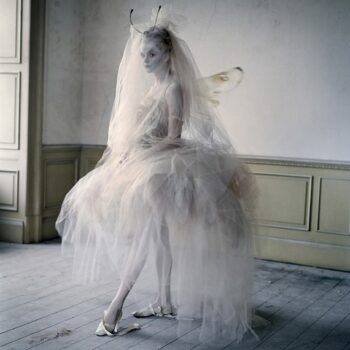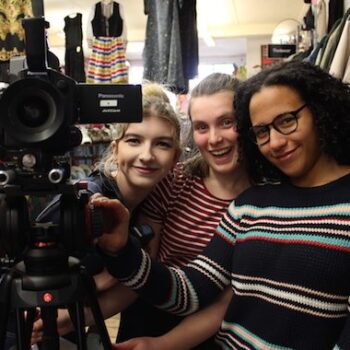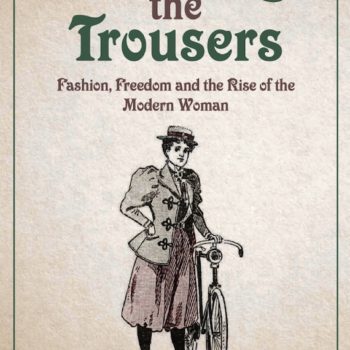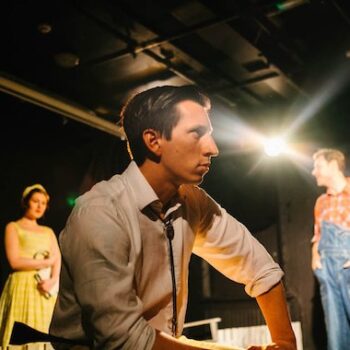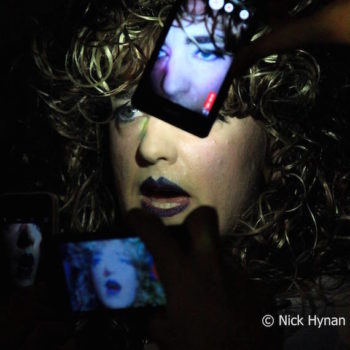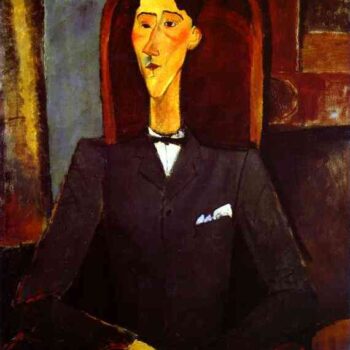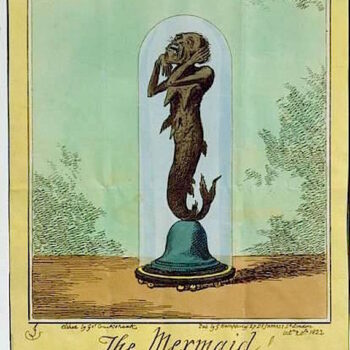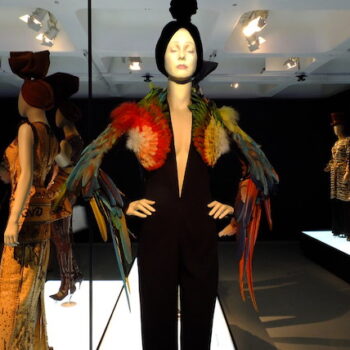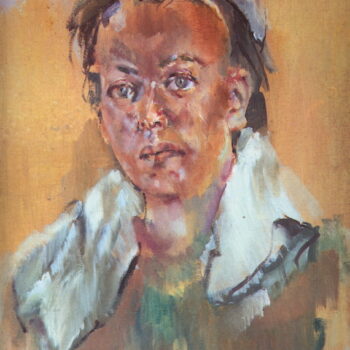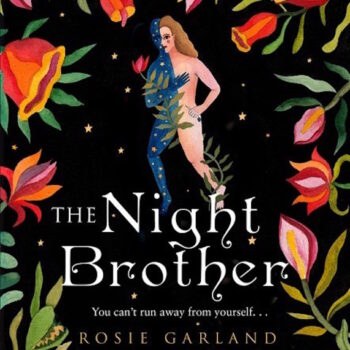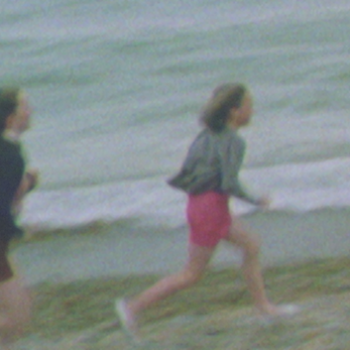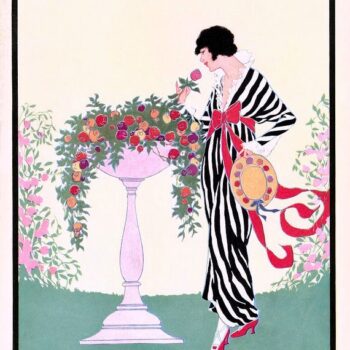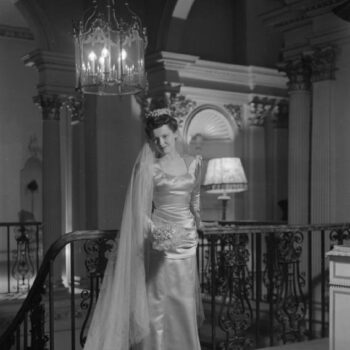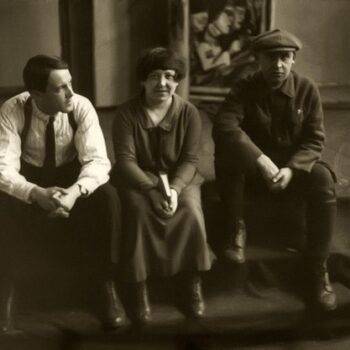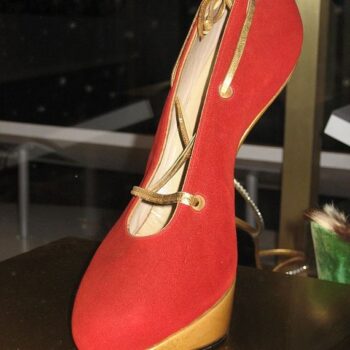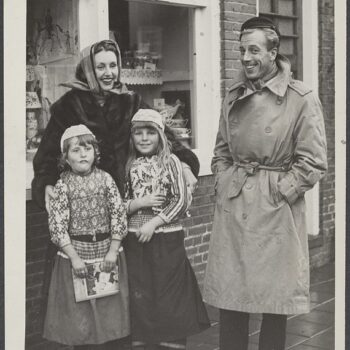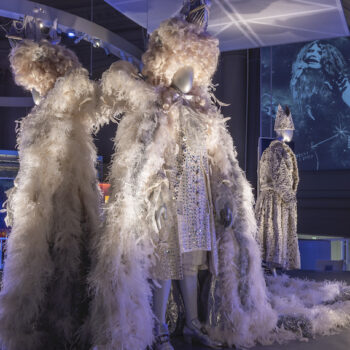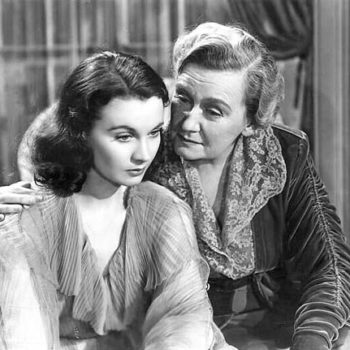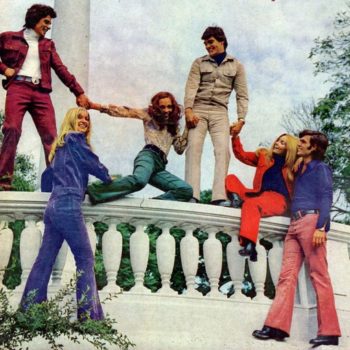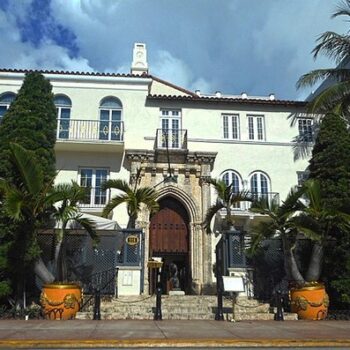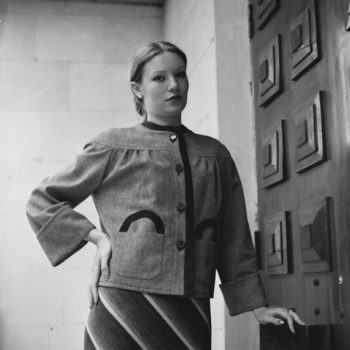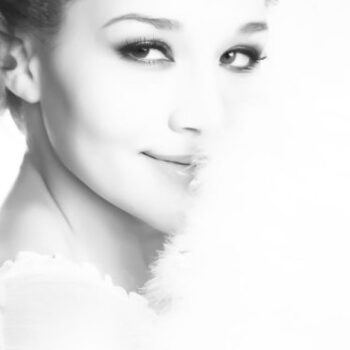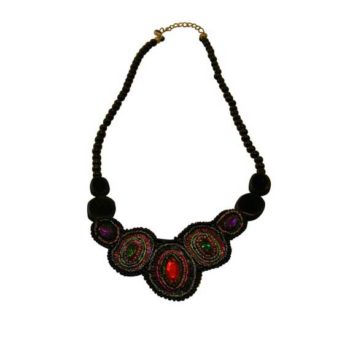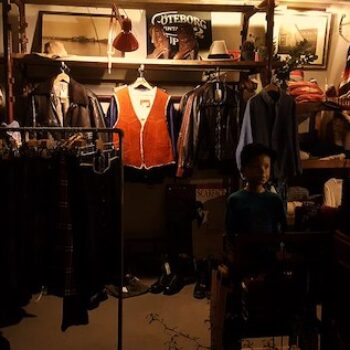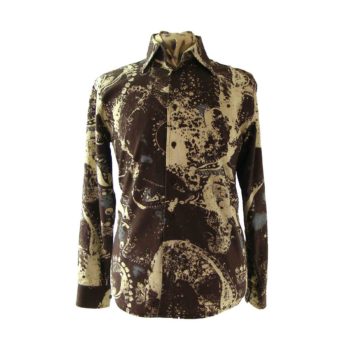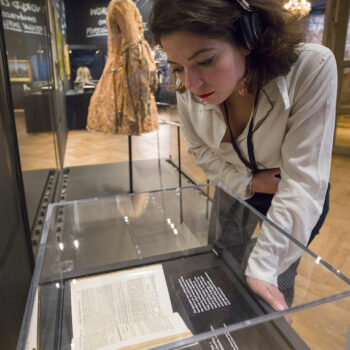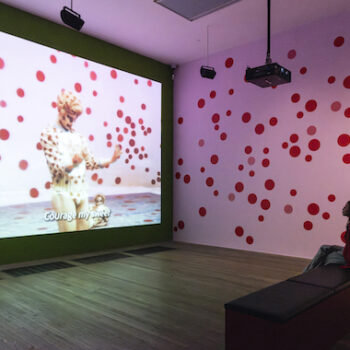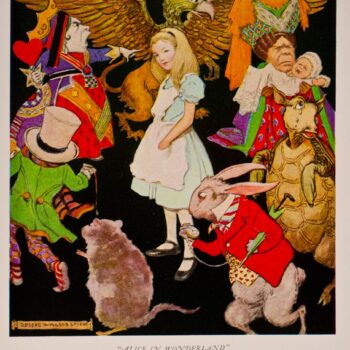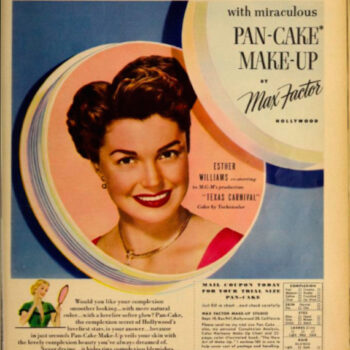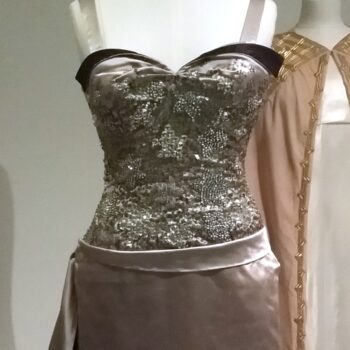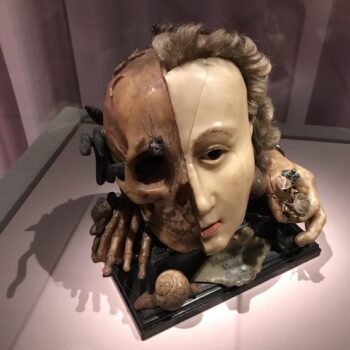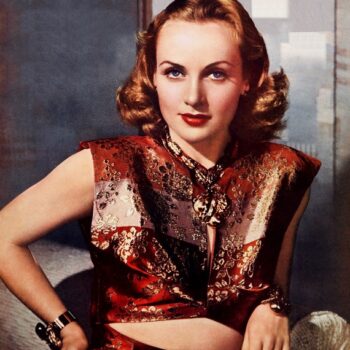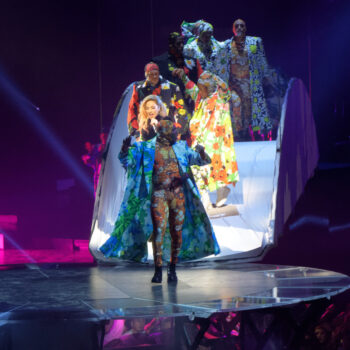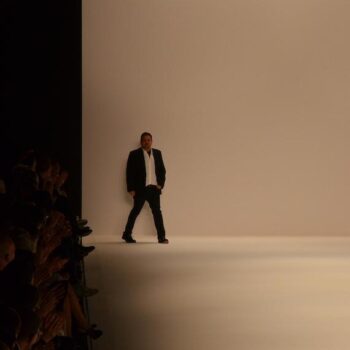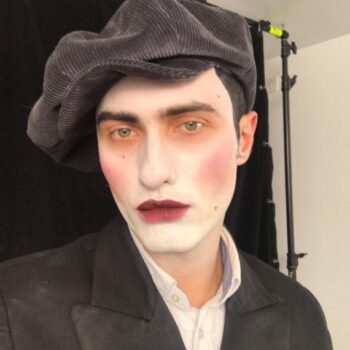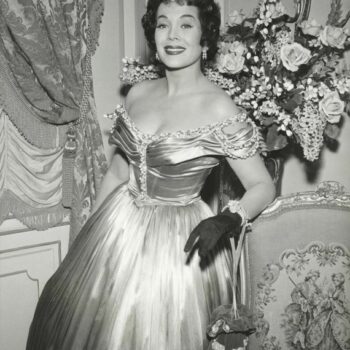Dolly Tree – A Dream of Beauty, interview with biographer Gary Chapman
October 1, 2017Gary Chapman has just about a life’s passion for the Jazz Age costume designer, Dolly Tree (1899-1962). She worked in very early cinema, and was also amazingly prolific in theatre and music hall.
Some of her high points were costuming almost an entire Folies Bergére production – the first female and the first English person to do so, and designing alongside Adrian for MGM where she created outfits for Myrna Loy, Jean Harlow, Rosalind Russell, Virginia Bruce and Judy Garland.
I was more than pleased to be able to interview Gary about his book on this great designer, and how it came about.
Genevieve Jones: So tell me, why did you decide to write a book about Dolly Tree? How did her work first catch your eye?
Gary Chapman: Dolly Tree has been an enduring passion of mine since I first heard about her when I was about thirteen years of age. Inexplicably, my grandfather used to talk about her and knew quite a lot about her life including her work in Paris and at MGM. How this was possible I have no idea and being so young I never even thought to ask him. So how he knew about her remains shrouded in mystery.
After finishing university and entering the world of book publishing as my profession, I decided to make some enquiries about her. One thing led to another and gradually the jigsaw puzzle of her working career began to take shape along with my collection of relevant ephemera. It has become an enduring passion.
I guess I rather enjoy finding subjects that have not been written about or explored before and Dolly Tree is no exception to this rule. My first book, for example was a biography about the Dolly Sisters.
I have numerous other books in preparation that are also completely unexplored subjects such as biographies about the Rocky Twins (the outrageous Norwegian Jazz Age Beauties) and Maurice Mouvet (the First Star of Ballroom) and After Dark – a guide to the development of cabaret and dancing in the Jazz Age.
My biography about Dolly Tree is a the result of decades of research and is a labour of love. I have been eager to get it published for many years but endured numerous rejections from publishers.
Only now has the technology been available for me to publish it myself and to write and design the book to give justice to Dolly Tree’s vast, unrecognised talent. Equally, the advent of the internet has enabled access to a huge number of different sources that have become available in the past decade or so and this has transformed the content of the book. So in a way it has been worth the wait.
GJ: What is one of your favourite designs by Dolly Tree?
GC: To be honest I like too many to have a particular favourite – but if I had to narrow it down I would have to select one stage costume and one film costume. The stage one would be an outfit she created in 1924 for the first cabaret show at the Piccadilly Hotel, London called Dolly’s Revels in 1924.
One of her key chorus dresses proved to be nothing less than sensational: ‘Her first chorus has orchid mauve bobbed wigs and bows of different shades of mauve from petunia to pale orchid on the frills of black silk net which make their combination garments’. This design was used for the programme cover and formed an abbreviated skirt with a strapless bodice that was also backless. The design is staggering for its brevity and audaciousness and can be interpreted as a clear prelude to the styles of the 1960s, including the mini-skirt. At the same time here was a strapless creation (that was also backless) way before it had become popularised.
The film gown I would select was created for Myrna Loy in Evelyn Prentice (1934). This creation was inspired by the calla lily described by Seymour in Photoplay February 1935 as an ‘exquisite formal ensemble – a white frame for Myrna’s Titian beauty’. The off-the-shoulder tunic in black velvet had a big crescent clip and the skirt was in white blister crepe. The flare collar and wrap was in matching white blister crepe. The wrap was lined with black velvet and corded heavily to accent the gracile lines. A suspicion of velvet showed at hands and beneath the tunic.
GJ: Tell me one of your favourite stories about the designer.
GC: The day after she arrived for the first time in New York on 5th October she placed an entire page advert in the trade newspaper Variety. The headline was ‘Miss Dolly Tree, Europe’s foremost costume designer has arrived’ and her previous activity in London, Paris and the rest of Europe was described in broad brushstrokes such as:
“Dolly Tree has designed the costumes for 17 shows at the Piccadilly Hotel – ‘Piccadilly Revels’ – 497 costumes in all”
and
“Dolly Tree has designed the costumes and decor for 37 pantomimes and for 31 touring revues”
It was a shrewd and very bold move and certainly got her noticed and she gained several commissions and finally an appointment at the Brooks Costume Company.
GJ: What was the most enjoyable part of writing the book? Did you come up against any problems?
GC: The only problems are various unanswered questions such as trying to unravel specific stage and film credits. For example, she claimed to have designed for Herman Heller’s shows in Berlin at the Admiral Palast and productions at the Palace in Brussels in the 1920s but no documentary evidence can be found.
In 1929 in New York, it was stated that Dolly Tree had costumed the Cohan show Billie and contributed to Ziegfeld’s Whoopee, yet the programmes do not mention her at all.
Despite these frustrations, I enjoyed every aspect from doing the research, to writing and then designing the book (it is self published under my own imprint called Edditt Publishing). At the last-minute a friend came up with a whole batch of invaluable and revelatory features from Woman’s Wear Daily which threw me into turmoil. These extraordinary descriptions of her film gowns, detail about her being made bankrupt, participation in Hollywood Fashion events and confirmation of a few unknown film credits completely altered my perspective of specific aspects of her working and private life.
***
To check out Dolly Tree : A Dream of Beauty, which is both incredibly detailed and luxuriously illustrated, please go to Gary’s website.
Gary will be giving a lecture at the BFI library in London on Monday 19th February at 6.30pm and also planning to lecture in Los Angeles in April / May 2018 – keep an eye on his website for more details!





